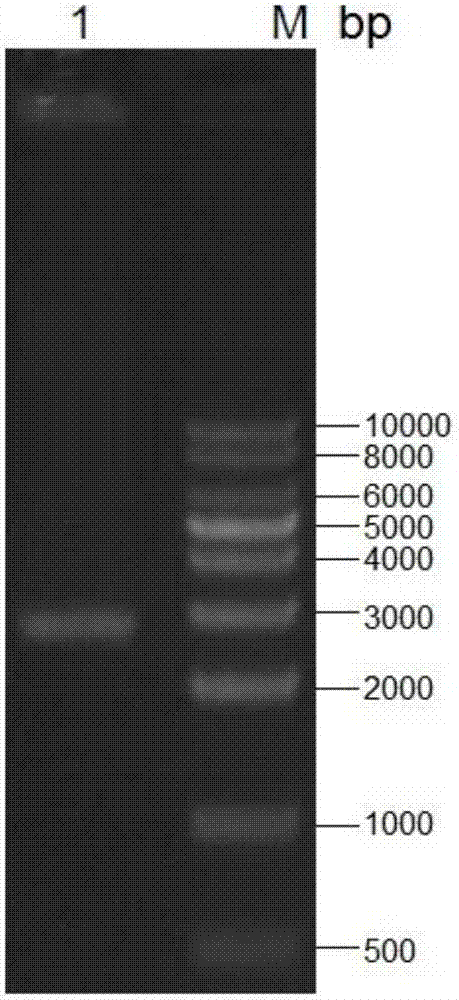Alpha-L-rhamnosidase gene and application thereof
A rhamnosidase and gene technology, applied in the field of bioengineering, can solve the problems of difficult expression and low protein expression, and achieve the effects of increasing production, improving catalytic efficiency, and reliable biological safety
- Summary
- Abstract
- Description
- Claims
- Application Information
AI Technical Summary
Problems solved by technology
Method used
Image
Examples
Embodiment 1
[0025] Acquisition of the target gene
[0026] In the present invention, the genome derived from Aspergillus niger (A. niger) is used as a template, and the primers in the following table are used for PCR amplification.
[0027] The PCR reaction system is: 2×PCR Buffer (containing Mg 2+ ) 25 μL, dNTP (25 mM) 5 μL, upstream primer coRHA-F and downstream primer coRHA-R (10 μM) 1 μL each, template 1 μL, KOD Fx DNA polymerase (purchased from TOYOBO, catalog number KFX-101) 0.5 μL, plus no Bacterial water to a final volume of 50 μL.
[0028] The PCR reaction conditions were: pre-denaturation at 95°C for 5 min, denaturation at 95°C for 30 s, annealing at 65°C for 30 s, extension at 72°C for 90 s, reaction for 30 cycles, and extension at 72°C for 10 min.
[0029] Sequencing verification was performed after the PCR was completed, and codon optimization was performed after the verification was correct to obtain a new α-L-rhamnosidase gene corhA nucleotide sequence, the sequence of wh...
PUM
 Login to View More
Login to View More Abstract
Description
Claims
Application Information
 Login to View More
Login to View More - R&D
- Intellectual Property
- Life Sciences
- Materials
- Tech Scout
- Unparalleled Data Quality
- Higher Quality Content
- 60% Fewer Hallucinations
Browse by: Latest US Patents, China's latest patents, Technical Efficacy Thesaurus, Application Domain, Technology Topic, Popular Technical Reports.
© 2025 PatSnap. All rights reserved.Legal|Privacy policy|Modern Slavery Act Transparency Statement|Sitemap|About US| Contact US: help@patsnap.com



